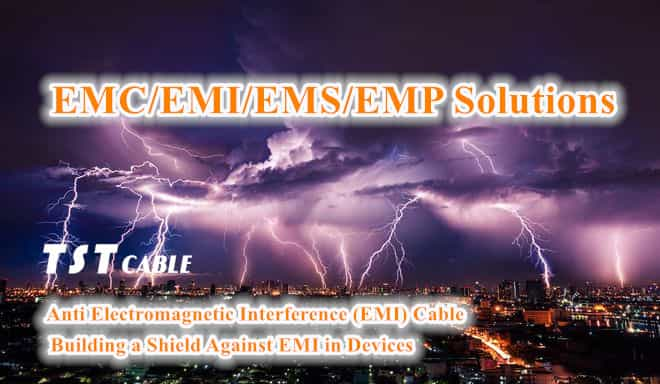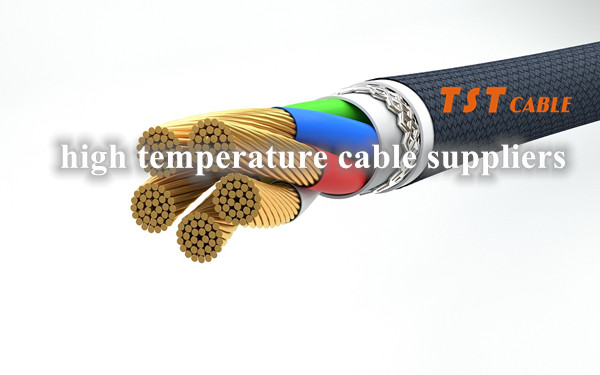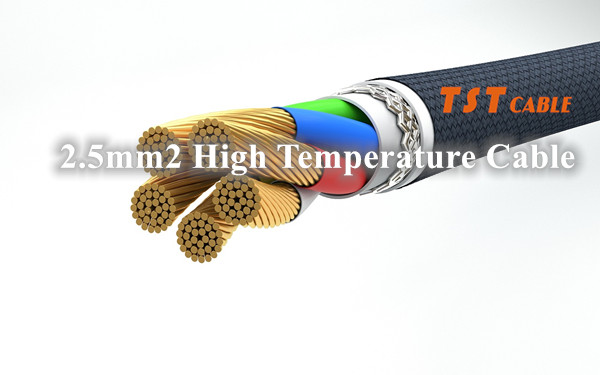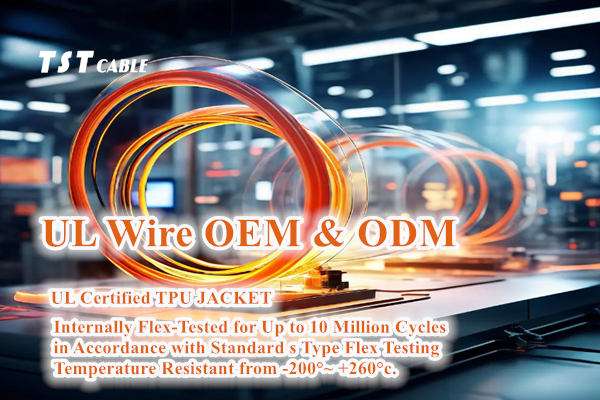
Electromagnetic interference EMC, EMI, EMS, EMP four differences and relationships
EMC, EMI, EMS, EMP is electromagnetic compatibility, electromagnetic interference, electromagnetic sensitivity, electromagnetic pulse 4 closely linked, interrelated but different concepts:
I. EMC (Electromagnetic Compatibility).
- Definition: Electromagnetic compatibility (EMC), refers to the state of the equipment or system in the electromagnetic environment without degradation of performance. Electromagnetic compatibility, on the one hand, requires no serious sources of interference within the system, on the one hand, requires that the equipment or system itself has a better resistance to electromagnetic interference. Electromagnetic compatibility is an emerging comprehensive fringe discipline, which mainly studies electromagnetic wave radiation, electromagnetic interference, lightning strikes, electromagnetic materials and other aspects.
- Coverage: EMC not only includes limiting the electromagnetic interference (EMI) generated by the equipment, but also includes equipment for electromagnetic interference immunity (EMS, Electromagnetic Susceptibility). It is a set of electronic equipment to ensure that the theory and practice of harmonious coexistence between the system, involving the design, testing, certification and management of a number of links.
EMC test composition: EMC contains two major items: EMI (interference) and EMS (sensitivity, anti-interference)
Second, EMI (Electromagnetic Interference).
- Definition: EMI refers to electromagnetic interference, refers to the electronic equipment itself in the process of work, the electromagnetic waves generated, external emissions, thus causing interference to other parts of the equipment or other external equipment, which includes conducted interference (through the power line or signal line propagation) and radiated interference (through the space propagation). For example, the common TV fluorescent screen “snowflake”, it is indicated that the signal received by the interference.
- Sources: EMI can come from a variety of sources, including, but not limited to, electric motors, wireless communication devices, household appliances, etc.
- Management: Control and reduction of EMI is usually achieved through the design of shielding, filtering and reasonable wiring and other measures to meet EMC standards and regulatory requirements.
EMI test items include:
- RE (Radiated, Emitted)
- CE (Conducted Interference)
- Harmonic (Harmonics)
- Flicker (flicker)
Third, EMS (ElectromagneticSusceptibility)
Electromagnetic sensitivity, refers to the degree of sensitivity of the equipment by electromagnetic interference, the more sensitive the equipment, the more susceptible to interference.
Because of EMI, there is EMC, because the EMS standard, in order to achieve EMC.
EMS test items include:
- ESD (electrostatic discharge)
- EFT (transient pulse interference)
- DIP (voltage drop)
- CS (conducted immunity)
- RS (radiated immunity)
- Surge (Surge, Lightning Strike)
- PFM (Industrial Frequency Magnetic Field Immunity)
Four.EMP (Electromagnetic Pulse):
- Definition: EMP refers to a sudden, high-intensity electromagnetic field phenomenon, usually produced by nuclear explosions, non-nuclear electromagnetic pulse weapons (such as high-power microwave weapons) or natural phenomena (such as solar flares).
- Characteristics: Compared to general electromagnetic interference, EMP has a very short duration and high energy density, and can cause large-scale instantaneous damage to electronic equipment and power grids.
- Protection: Protection against EMP usually requires special hardening techniques and measures, including enhanced shielding, filtering and isolation, as well as ensuring redundancy and rapid recovery of critical systems.
EMC is about the overall compatibility strategy of the equipment or system in the electromagnetic environment, EMI, EMS is an aspect of EMC that needs to be managed and controlled, i.e., the interference generated by the equipment, and EMP is a specific type of extreme electromagnetic events, which puts forward higher-order challenges and protection needs for EMC and EMI.
V. Application Scenarios
EMC has a wide range of applications, covering all fields that use electronic equipment from consumer electronics, industrial control, automotive electronics, medical devices to aerospace, etc. EMC standards and tests ensure the interoperability and safety of products in the global market.
- Military & Defense: In military equipment, such as radar, communication systems, and navigation equipment, a high degree of EMS capability is required to ensure that they can still work stably in complex electromagnetic environments without being interfered by the enemy.
- Aerospace: Aircraft and satellite systems have strict requirements for EMS to prevent failures when encountering bad weather or space radiation.
- Medical equipment: such as MRI, ECG machines, etc., need to ensure that they operate accurately and error-free in the coexistence of many electronic devices in the hospital to avoid interference affecting the diagnostic results.
- Rail transportation: Signal control and safety systems for high-speed trains and subways need to have strong EMS performance to ensure operational safety.
- Industrial automation and control: Control systems in automated production lines and smart grids need to prevent external interference from affecting production safety and efficiency.
EMI/EMS management is carried out throughout the entire life cycle of electronic equipment design, production, installation and use, focusing on the interaction between equipment in daily operation to avoid unintended performance degradation or functional failure.
EMP protection is mainly focused on military facilities, critical infrastructure (e.g., power grids, data centers), aviation and spacecraft, and other areas with extremely high requirements for electromagnetic safety.EMP protection is designed to withstand electromagnetic attacks under extreme conditions, ensuring the survivability of the system under extreme events.
SIX,Technical Measures
EMC design focuses on system-level considerations, including device selection, layout and wiring, grounding design, filtering and shielding, etc., with the aim of reducing the generation of interference at the source and improving the immunity of the equipment to external interference.
EMP protection technology is more focused on the protection of extreme conditions, such as the use of heavy-duty shielding materials, far beyond the conventional grounding design, specialized surge protection devices and system-level hardening strategy to ensure the viability of key components and systems.
EMI/EMS suppression techniques are relatively flexible and diverse. Depending on the type and degree of interference, a variety of methods such as simple filters, shielded cables, increased distance or isolation in time and space can be used to achieve this.
VII. Regulation and Standards
EMC follows the standards set by various countries and international organizations, such as the CE marking requirements of the European Union, the FCC rules of the United States, and a series of standards of the International Electrotechnical Commission (IEC), etc., to ensure that the products are compliant in the global market.
Although EMP protection also has relevant military standards and guidelines, due to its specificity, the basis for the design of protection measures in many cases is classified or based on internal guidance from specific agencies (e.g., DOE, DOD in the U.S.).
EMI/EMS management also follows a range of domestic and international standards, but its standard-setting tends to focus more on the compatibility of commercial and civilian products to ensure the normal use of electronic equipment in everyday life.
EMC, EMI, EMS, EMP and although they all involve the interaction of equipment in the electromagnetic environment, but their focus, the technical measures taken, applicable scenarios and follow the standards have their own focus, and together constitute the four pillars of electromagnetic compatibility and safety in modern electronic technology.
Eight, anti-electromagnetic interference (EMI) cable development prospects
Current international war conflicts in the context of anti-electromagnetic interference (EMI) cable market demand has increased significantly, there are several key factors behind this trend:
- Characteristics of modern warfare: modern warfare, electronic warfare has become one of the key factors in deciding whether to win or lose the war. Electronic warfare means include electromagnetic interference, electronic deception and electronic eavesdropping, etc., intended to weaken or destroy the enemy’s command, control, communications, computers, intelligence, surveillance and reconnaissance (C4ISR) systems. As a result, the military has experienced a surge in demand for cables that can withstand electromagnetic pulse (EMP) and high-intensity EMI to protect critical military communications and control systems from hostile interference.
- Infrastructure Protection Needs: In conflict zones, it is critical to ensure the proper functioning of critical infrastructure such as power supplies, data centers, and military bases. The cable systems of these facilities are vulnerable to attack and paralysis if they do not have sufficient anti-jamming capabilities, therefore, anti-electromagnetic interference cables have become an important part of securing infrastructure.
- Technological advances and upgrading of military equipment: With the continuous upgrading of military equipment, such as drones, precision-guided weapons, stealth technology is widely used, the reliability and security of communication and data transmission requirements are higher. This has prompted the R&D and application of anti-electromagnetic interference cables to become an important part of military equipment modernization.
- Uncertainty of the international security situation: regional conflicts and uncertainty of the global security situation have prompted countries to strengthen their national defense construction, including enhancing electronic warfare and cybersecurity capabilities, thus increasing the demand for high-performance, high-stability anti-electromagnetic interference cables.
- Spillover effect in the civil sector: In addition to the military sector, the application of anti-EMI technology in the civil sector is also growing, especially in industries that are sensitive to the electromagnetic environment, such as nuclear power plants, financial data centers, and air traffic control, in order to protect them from unintentional or intentional electromagnetic interference.
The reality of international war conflicts and the anticipation of future conflict patterns are driving the growth in demand for anti-EMI cables, promoting the development and innovation of related technologies to adapt to more complex and demanding operational and security environments.
Defending Connectivity Against Unknown Challenges TSTCABLES Leading Global Supplier of EMI Resistant Cables
TST CABLES EMI cables are designed for extreme environments. Using advanced shielding technology, they effectively isolate EMI/EMP interference and ensure zero data transmission errors. Complying with international EMC standards and tested under extreme conditions, TST CABLES provides a reliable communication lifeline for critical areas such as military, aerospace, nuclear power, marine, rail transportation, energy, and healthcare, etc. TST CABLES builds a brick wall for safe communication of equipment. If you have excellent vision, advanced strategic thinking, want to consult or customize high temperature cables,anti-electromagnetic interference cable series solutions, welcome to send an email to communicate with us, senior engineers are happy to serve you.
Also available in:
English





